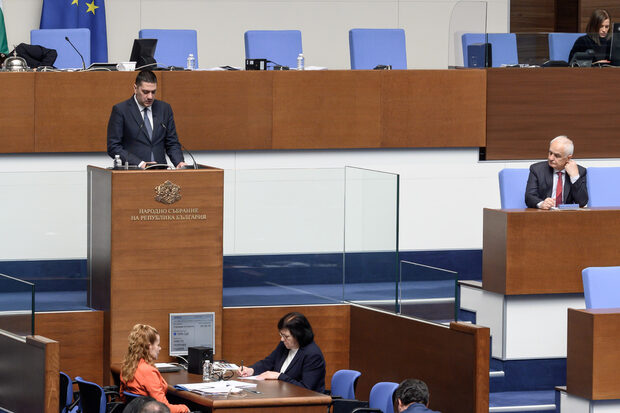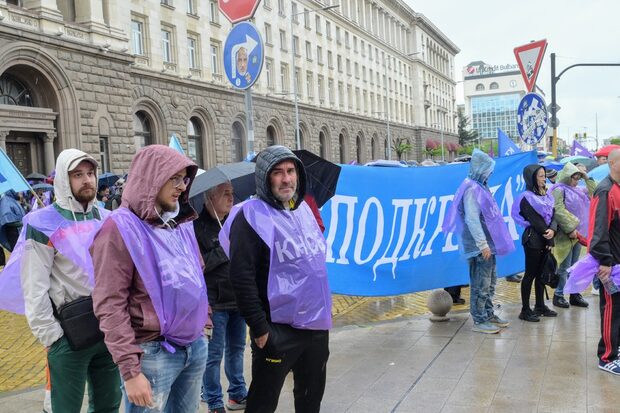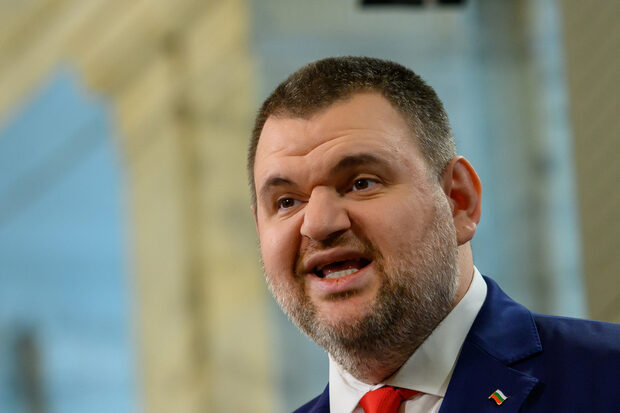"Target is down; I am coming out from attack position." Uttered in calm and composed tones, these were the last recorded words of Major Valentin Terziev, the 47-year-old pilot and squadron commander who plunged to his death in an MiG-29 fighter jet in the early hours of 9 June. About 13 seconds later, his plane crashed into the Black Sea, roughly 11 kilometers east of Shabla, the easternmost part of Bulgaria, and splintered into thousands of pieces, sinking 70 meters below sea level.
Maj. Terziev's crash was during night time combat drills, alongside Serbian and US forces. All hopes of finding him, dead or alive, quickly vanished because there was no indication he ever tried to eject from the aircraft. It took 15 days for the Bulgarian Navy and private companies, sent to find the plane's "black box", to complete their task.
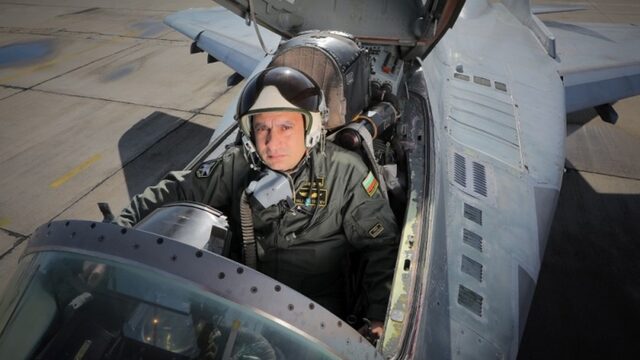
Immediately, an army of pseudo-experts, confused retired pilots and pure conspiratologists emerged - and were gladly welcomed - by TV channels and dubious websites. Several absurd versions of what happened were propagated. First, the Russophiles blamed the Americans participating in the drills for automatically shooting anti-aircraft missiles against the Soviet-era jet. The Russophobes pointed the finger at Serbian participants in the exercises, calling them "Kremlin proxies" and invoking centuries'-old rivalry between the two countries. The missing information about the last 13 seconds of the plane fueled various rumors.
The "black box" of the plane - now recovered but still awaiting deciphering - will shed light on what really transpired. The likeliest explanation is that the pilot took a deep dive towards the sea to hit a parachute-suspended target that might have descended faster than expected. Disoriented - either by the orders coming from flight control, or by the surrounding darkness - he did not manage to lift the plane early enough and he crashed into the water.
But focusing on these last 13 seconds ignores a much bigger and bleaker picture than any conspiratologist - or even military prosecutor - would dare to explore
Thirteen hours < thirteen seconds
In fact, there are 13 hours that might be more pivotal in the demise of Maj. Terziev than the last 13 seconds of his flight. This was the total flying time that Terziev - described as one of the most experienced Bulgarian fighter pilots - had had in the five months preceding the crash, according to the commander of the Graf Ignatievo Airbase, Brigade General Nickolay Russev. This was also his first night flight, and his first over sea this year, Gen. Russev added. "There can't be much more (hours) than that," he conceded in a bTV interview.
According to Defense Ministry information, Maj. Terziev had only had about 700 flying hours in his 22-year career - equivalent to 30 hours per year, far lower than the 150-220 hours per year that Russian and other NATO pilots fly, respectively. Maj. Terziev's meager flying time means he focused on routine tasks - usually linked to air policing, the primary mission of the Bulgarian Air Force in recent years. So his duties covered policing the Black Sea skies against Russian provocations, or participation in military parades. Just like most other pilots, he hardly ever undertook more complicated missions - such as the night flying that was his fateful final mission.
But don't think that the major was underworked - on the contrary, his wife said in an interview that his tiredness after night duty the day before the Shabla drill might have contributed to the crash.
Broken plane or broken system?
So, why fly so little? The aging MiG-29 jets simply don't have the flight resources required for more frequent sortees, as they would need far better maintenance than they currently receive. And there has been neither the money, nor the political will to remedy this. According to a parliamentary question to then-Defense Minister Krassimir Karakachanov in May 2020, between 2006 and 2020 the Bulgarian MiG-29s were maintained for 137 million euro, or less than 9 million euro per year. Even this sum has been considered an overstretch for the chronically underfunded Bulgarian military, but this was all that was available to keep eight out of the 16 fighters operational.
The situation was so bad at one point that some Bulgarian air force pilots said they would boycott training, citing concerns related to the safety of the MiG-29 plane.
Add to that the fact that, since 2014, repairs have been even slower due to sanctions imposed by the EU on Russia, where the RSK "MiG" company operates. Hence Bulgaria has so far failed to find another way to maintain its MiG fleet. Contrast that with Slovakia, which has a 30-million euro contract for integrated logistical support with RSK "MiG" or Poland, which developed its own capacity to repair its MiG-29 squadrons while slowly substituting them with US-made fighters.
An everlasting delay of the modernisation
So why has Bulgaria procrastinated for several decades on starting to replace its aging Soviet-made air fleet with NATO aircraft? "There have been plans to replace the current combat aircraft with new or second-hand aircraft since the late 1990s," a Stockholm International Peace Research Institute (SIPRI) paper from 2018 says. "Although replacing the aircraft has consistently been considered a priority, the process has been repeatedly delayed, mainly due to lack of funds," it concludes.
Three years later and Bulgaria is expecting its first modern F-16 Block 70 fighters from the controversial 2018 deal with the USA. Hopefully, by the end of 2023, Bulgarian pilots will have planes with enough resources to complete, say, 200 flying hours a year. But don't be too quick to rejoice. After the initial resource of the new fighters runs out in a few years, and the three-year contract for integrated logistical support with Lockheed Martin lapses, repairing them will likely prove too expensive. The figure involved will likely far exceed the 9 million euro per year for the MiG-29s.
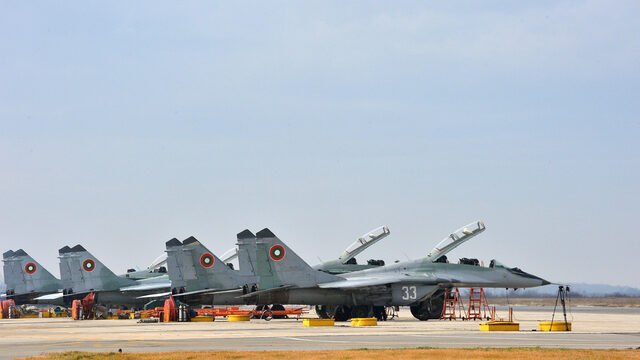
According to Aero-bg, a specialised aircraft publication, the Parliamentary Defense Committee estimated in 2019 that 56 million US dollars, or 47 million euro per year, would be required for maintenance. Add to that the caveat that this sum applies only for 8 F-16s, and Bulgaria is planning to acquire 8 more in the coming years. Does this mean that, out of the blue, Sofia will increase funding on its airfleet tenfold to provide adequate resources for its pilots to fly safely? Or that the number of flying hours will decrease again once the initial resource is spent?
Whatever the crash inquiry reveals, the underlying problems of the Bulgarian Air Force ought to be urgently addressed by the next Bulgarian government. Ignoring them will only lead to the loss of more fine officers like Maj. Terziev - and to the potential end of more than a century of Bulgarian military aviation.
"Target is down; I am coming out from attack position." Uttered in calm and composed tones, these were the last recorded words of Major Valentin Terziev, the 47-year-old pilot and squadron commander who plunged to his death in an MiG-29 fighter jet in the early hours of 9 June. About 13 seconds later, his plane crashed into the Black Sea, roughly 11 kilometers east of Shabla, the easternmost part of Bulgaria, and splintered into thousands of pieces, sinking 70 meters below sea level.
Maj. Terziev's crash was during night time combat drills, alongside Serbian and US forces. All hopes of finding him, dead or alive, quickly vanished because there was no indication he ever tried to eject from the aircraft. It took 15 days for the Bulgarian Navy and private companies, sent to find the plane's "black box", to complete their task.










